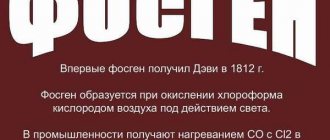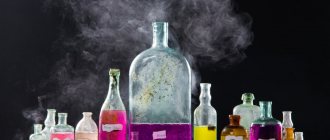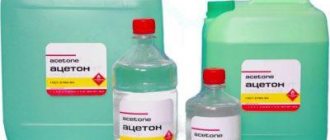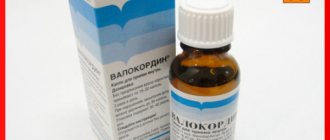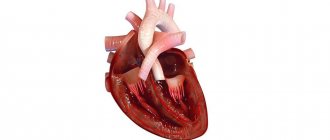Carbon monoxide is a strong toxic substance that, when entering the body, leads to disruption of the functioning of its organs and systems.
Carbon monoxide poisoning can occur in a variety of places. This substance is odorless, which undoubtedly increases its danger, since people are not aware of its presence in the air.
The entire body is forced to work under conditions of severe oxygen deficiency. This leads to serious consequences: damage to the heart, brain, lungs, and skeletal muscles.
Causes of carbon monoxide poisoning
People get carbon monoxide poisoning not only at work or when putting out fires, but also at home. You can be poisoned by this gas even if you are near a busy and major highway. The concentration of harmful substances from exhaust gases in such places exceeds the permissible threshold. In car exhaust, the concentration of carbon monoxide can range from 1 to 3 percent. And for severe poisoning, a carbon monoxide content of 0.1% is sufficient.
You can get carbon monoxide poisoning in rooms where stove heating, a fireplace is used, or there is an accumulation of car exhaust gases, there are leaks of household propane gas, or kerosene lamps are used and ventilation does not work.
Carbon monoxide passes through walls, soil and other partitions. An ordinary gas mask will not protect against the effects of carbon monoxide.
Mechanism of toxic action
Carbon monoxide that enters the blood interacts with hemoglobin (Hb) of red blood cells, forming carboxyhemoglobin (HbCO), which is not capable of transporting oxygen. A hemic type of hypoxia develops. Carbon monoxide is able to interact with both the reduced (Hb) and oxidized (HbO) forms of hemoglobin, since iron is divalent in both forms.
The relative affinity of Hb for carbon monoxide is approximately 300 times higher than for oxygen. Since carboxyhemoglobin is not able to transport oxygen from the lungs to the tissues, there is a close correlation between its level in the blood and the severity of the clinical picture of poisoning.
Medical protection measures:
Special sanitary and hygienic measures:
-use of personal protective equipment (respiratory protection) in the zone of chemical contamination;
Special preventive medical measures:
-use of antidotes before entering the fire zone.
Special treatment measures:
- timely identification of those affected;
- the use of antidotes and means of pathogenetic and symptomatic treatment of conditions that threaten life, health, and capacity, during the provision of first (self-mutual aid), pre-medical and first medical (elements) aid to victims;
-preparation and conduct of evacuation.
Symptoms of poisoning
Carbon monoxide is a poisonous gas that affects the blood, nervous system and muscle tissue. The fumes enter the bloodstream through the lungs and do so 200 times faster than oxygen.
The cause of poisoning can also be a careless attitude to fire safety rules, instructions for using gas or heating appliances. The list of actions in case of poisoning will be determined by the level of intoxication. There are three degrees of poisoning in carbon monoxide poisoning:
- mild (accumulation of carboxyhemoglobin in the blood up to 30%),
- medium (carboxyhemoglobin blood level from 30 to 40%),
- severe (carboxyhemoglobin level from 40 to 50%).
Physicochemical characteristics. Toxicity. Toxicokinetics.
Carbon monoxide is a colorless, odorless gas with a low air density (0.97). It is poorly absorbed by activated carbon and other porous materials. Carbon monoxide, as a compound with a divalent carbon atom, is a reducing agent and can enter into oxidation reactions. Since the gas is lighter than air, zones of unstable chemical contamination in open space can only form in areas of extensive fires.
People's sensitivity to carbon monoxide varies widely. It depends on many factors: the duration of exposure, the degree of physical activity at the time of the poison’s action, the external temperature and the state of the body. Poisoning occurs faster and is more severe in cases of anemia, vitamin deficiencies, and in malnourished people.
The only way gas enters the body is inhalation. Carbon monoxide, when inhaling air contaminated with it, easily overcomes the pulmonary capillary membrane of the alveoli and penetrates the blood. The release of carbon monoxide from the body under normal conditions also occurs unchanged through the lungs. The half-life is 2 - 4 hours.
The toxic effect of carbon monoxide on the body is based on the reaction of interaction with hemoglobin in the blood and the formation of carboxyhemoglobin, which is unable to carry oxygen. The resulting hypoxia is hemic in nature.
Severe poisoning
A severe form of poisoning can be fatal, and to prevent this from happening, you should call a doctor immediately. For severe poisoning, symptoms will include:
- comatose state,
- loss of consciousness,
- seizures,
- cardiac dysfunction,
- respiratory problems,
- involuntary urination,
- loss of all superficial and deep reflexes,
- trophic skin disorders,
- pulmonary edema,
- myocardial infarction,
- toxic pneumonia.
When carbon monoxide enters the blood, it prevents hemoglobin from carrying oxygen. It forms carboxyhemoglobin with it, which blocks the delivery of oxygen to hemoglobin. This causes oxygen starvation for cells throughout the body, but is most dangerous for brain cells.
Carbon monoxide has a detrimental and unpredictable effect on the human body. It enters into oxidative reactions that destroy the body and disrupt its biochemical balance. The presence of carboxyhemoglobin in the blood ranging from 50 to 80 percent leads a person to a coma or death. Pregnant women, people with chronic respiratory diseases and children are very sensitive to the effects of carbon monoxide.
Signs and symptoms [ edit | edit code ]
When the inhaled air contains 0.08% CO, a person feels a headache and suffocation.
When the CO concentration increases to 0.32%, paralysis and loss of consciousness occurs (death occurs within 30 minutes). At concentrations above 1.2%, consciousness is lost after two to three breaths, and the person dies in less than 3 minutes. Concentration of CO in the air, carboxyhemoglobin HbCO in the blood and symptoms of poisoning.
[7] [8]
| CO,% vol. (20°C) | CO, mg/m³ | Exposure time, h | HBCO in blood, % | Main signs and symptoms of acute poisoning |
| ≤0.009 | ≤100 | 3.5—5 | 2.5—10 | A decrease in the speed of psychomotor reactions, sometimes a compensatory increase in blood flow to vital organs. In persons with severe cardiovascular insufficiency - chest pain during exercise, shortness of breath |
| 0.019 | 220 | 6 | 10—20 | Slight headache, decreased mental and physical performance, shortness of breath with moderate physical activity. Visual perception disorders. May be fatal to fetuses and persons with severe heart failure |
| ≤0.052 | ≤600 | 1 | ||
| ≤0.052 | ≤600 | 2 | 20—30 | Throbbing headache, dizziness, irritability, emotional instability, memory loss, nausea, poor coordination of fine hand movements |
| 0.069 | 800 | 1 | ||
| ≤0.052 | ≤600 | 4 | 30—40 | Severe headache, weakness, runny nose, nausea, vomiting, blurred vision, confusion |
| 0.069 | 800 | 2 | ||
| 0.069—0.094 | 800—1100 | 2 | 40—50 | Hallucinations, severe ataxia, tachypnea |
| 0.1 | 1250 | 2 | 50-60 | Fainting or coma, convulsions, tachycardia, weak pulse, Cheyne-Stokes respirations |
| 0.17 | 2000 | 30 min | ||
| 0.15 | 1800 | 1.5 | 60—70 | Coma, convulsions, respiratory and cardiac depression. Possible death |
| 0.2—0.29 | 2300—3400 | 30 min | ||
| 0.49—0.99 | 5700—11500 | 2-5 min | 70—80 | Deep coma with decreased or absent reflexes, thready pulse, arrhythmia, death. |
| 1.2 | 14000 | 1-3 min | Loss of consciousness (after two or three breaths), vomiting, convulsions, death. |
- In case of mild poisoning the following appear:
- headache,
- knocking in the temples,
- dizziness,
- chest pain,
- dry cough,
- lacrimation,
- nausea,
- vomit,
- visual and auditory hallucinations are possible,
- redness of the skin, carmine-red coloring of the mucous membranes,
- tachycardia,
- increased blood pressure.
First aid for carbon monoxide poisoning
The stages of carbon monoxide poisoning vary in severity, but regardless of the level of danger, they require the presence of a doctor and the provision of medical care. Carbon monoxide affects the human body even after the victim has left the danger zone. The consequences of poisoning are divided into early (up to 2 days) and late (up to 40 days). Therefore, the patient needs medical supervision and assistance.
First aid for carbon monoxide poisoning should be provided as early as possible. A person who finds himself in a gas-polluted room and is poisoned must be taken out or taken to fresh air and immediately call an ambulance. Only a specialist can determine the degree of intoxication and provide qualified assistance. Carbon monoxide spreads through the blood very quickly, so you can’t hesitate to call, it could cost the victim’s life.
Until the ambulance arrives, it is necessary and possible to provide emergency assistance to the victim. Provide oxygen access to the patient, unbutton the collar, remove the tie, loosen the belt, remove the scarf. If the victim is conscious, he can be given sweet and strong tea or coffee to drink.
If the patient is unconscious and not breathing, cardiopulmonary resuscitation will be required immediately. You can also revive the patient with ammonia, after moistening a cotton swab with it. If this does not help, you need to do intensive rubbing of the limbs, face and chest. This activates blood circulation. If the victim loses consciousness, turn him on his side. This way, the airways will open and there will be no risk of the tongue sticking into the throat.
Rescuers should take a deep breath before entering a smoke-filled room and try not to breathe while they are inside the building. As much as possible. If possible, open windows to reduce gas concentrations. Employees of enterprises that use carbon monoxide in production processes must clearly understand what to do in the event of carbon monoxide poisoning. To do this, they are given instructions.
First aid and emergency aid [ edit | edit code ]
Algorithm for providing emergency care at the site of the lesion
- A gas mask is put on the victim (in combination with a hopcalite cartridge) and he is immediately evacuated from the affected area.
Algorithm for providing emergency care outside the affected area
- The gas mask is removed from the victim and freed from clothing that restricts breathing.
- The victim is given oxygen and warmed up. Modern treatment methods include oxygen therapy in a pressure chamber.
- Since ultraviolet rays accelerate the breakdown of carboxyhemoglobin, it is advisable to irradiate the victim with a quartz lamp.
- According to indications, artificial respiration is performed using hand-held breathing devices.
- For heart failure, administration of 1 ml of cordiamine, as well as 1 ml of a 10% caffeine solution subcutaneously, is indicated.
- The victim is immediately evacuated to the nearest medical facility.
Carbon monoxide poisoning is often complicated by the development of inflammatory processes in the respiratory tract and lungs (bronchitis, pneumonia), therefore antibiotics are prescribed for prophylactic purposes.
Prevention
The consequences of fugitive gas poisoning are very complex. To protect yourself and your family from fumes, you must take precautions. Preventive measures include the following simple but effective rules:
- is not located near large and busy highways during their peak load,
- check and monitor the serviceability of stove heating, fireplaces and ventilation,
- use only certified propane cylinders,
- do not leave kerosene lamps unattended,
- do not close the garage doors when the car is running,
- does not go to sleep in a car if its engine is running,
- Do not leave children unattended and follow fire safety rules.
Conclusion
Carbon monoxide cannot be detected or smelled. The consequences of poisoning are very serious, sometimes fatal. First aid in case of poisoning should be provided to the victim as soon as possible; his life depends on it. The degree of poisoning is determined by the concentration of toxic substances in the air and the time spent in the gas-filled space. The consequences of poisoning may appear throughout the entire treatment period. If you adhere to basic safety conditions, you don’t have to subject yourself or your loved ones to such a serious test. Take compliance seriously not only when you are being monitored, but also when no one is checking you.
- Author: Elena
Rate this article:
- 5
- 4
- 3
- 2
- 1
(0 votes, average: 0 out of 5)
Share with your friends!


